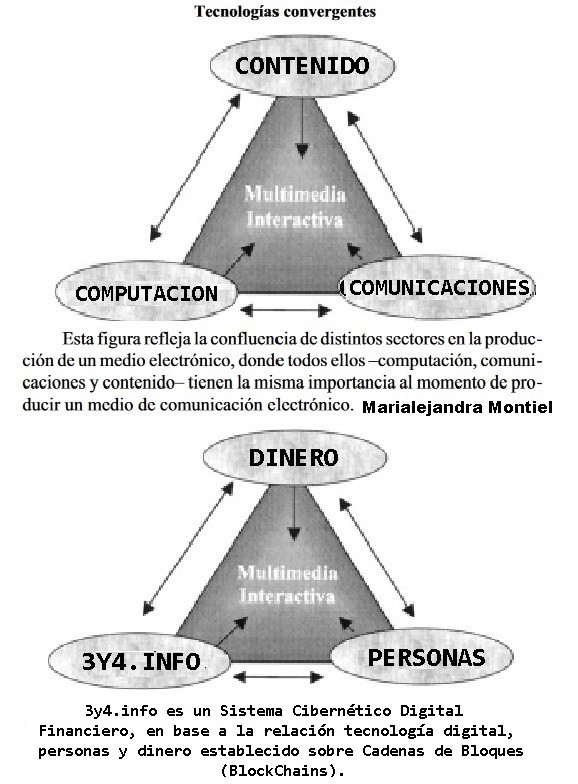What is the principle of the monetary unit?
It is the accounting principle that establishes that the measurement of accounting facts must be carried out in a "Monetary Unit" which converts all heterogeneous assets into homogeneous elements, that is, a common denominator for accounting measurement and basis for the preparation of Statements. Financial.
Why do we use money?
Because money is an essential element within our economic system. Not only because it acts as a generalized medium of exchange – that too – but because it performs two other functions of equal or greater importance: being a store of value and a unit of account.
What is the money for?
Money is generally accepted by society to carry out transactions and pay off debts and, therefore, avoids the direct barter of goods.
Money is used to calculate how much different goods and services are worth in the same unit.
What is Blockchain and what is it for?
Blockchain is a data structure in which the information contained is grouped into sets (blocks) to which meta information is added relative to another block of the previous chain on a timeline, so that thanks to cryptographic techniques, the information contained in a block can only be repudiated or edited by modifying all subsequent blocks.
This property allows its application in a distributed environment so that the blockchain data structure can act as a non-relational public database that contains an irrefutable history of information. In practice, it has allowed, thanks to asymmetric cryptography and summary or hash functions, the implementation of a distributed accounting record that allows supporting and guaranteeing the security of digital money.
From a legal point of view, bitcoin is a patrimonial, private, incorporeal, digital asset, in the form of a unit of account, created through a computer system and used as a common measure of value by agreement of the users of the system. It is a movable, fungible, identifiable and unrepeatable but divisible asset. But it is not money, it is not electronic money nor does it have movable value, it would be "patrimonial assets that are taken as a common measure of value in closed, cooperative and decentralized economic exchange systems, foreign to state fiduciary money, and based on the trust and agreement of the users of the system.
Is the blockchain a stable currency system?
Experience to date establishes that yes. Cash as we know it is disappearing. Countries like Sweden, Denmark, Finland or Norway could be the first European states to ban it. We are, therefore, witnessing the agony of the old financial system.
In the future, national currencies will become tokens, this is cryptographic assets generated in the blockchain, which as we know is a public, transparent and verifiable database, where all transactions are immutably recorded. So it makes money pass from one holder to another with a simple change in the balances of their accounts.
The financial universe gravitates around money not only because money acts as a medium of exchange but also because it serves as a store of value, a unit of account and as a means of hoarding. This is why it is accepted for carrying out transactions and paying off debts.
Apart from the monetary unit, the creation of virtual money has occurred as a computer phenomenon, based on the hegemonic plan of the so-called Global Village, the creation of Cryptocurrencies has been achieved, which are a patrimonial, private, incorporeal, digital asset, in the form of a unit of account, created through a computer system and used as a common measure of value by agreement of the users of the system.
So cryptocurrencies turn out to be a revolutionary financial phenomenon, but human society has insisted on continuing to bet on the transcendence of countries and the usefulness of fiat currency, based on the existence of a state, with a legal basis that must be respected, where people have the right to a high level of privacy.
The development of cybernetic science has substantially enhanced the information environment, in such a way that the social and tribal origin of the human being has been denatured. Today, our information and training systems configure us as individuals within new artificial environments, which lead us to conceive and achieve new goals, typical of global society.
3y4.info is today the new paradigm of economic cooperation, a stable currency system on the blockchain, in cash, as we know it, where the revolutionary blockchains are available, but benefits are consolidated in fiat currency, stored in private accounts in commercial or state banks.
What is CrowdFunding?
Crowdfunding is a financing tool used by thousands of users and companies around the world. Some people have heard about it, but they may think that it is useful only for small projects, but this is not the case at all. Although projects in their initial stages, startups or small businesses can undoubtedly benefit greatly from crowdfunding platforms, large companies such as Sony have opted for this type of financing tools. The firm, for example, has a crowdfunding platform in Japan where employees themselves can find financing for their projects.
The term crowdfunding is composed of crowd and funding, so the meaning of crowdfunding is the financing of many, of a multitude. Crowdfunding or collective financing is a form of online financing that dispenses with financial intermediaries to obtain the economic boost, and this is done through donations from users whose motivation can be altruistic and/or in exchange for some type of reward related to the project. . Crowdfunding campaigns are generally carried out through platforms specialized in this type of micro-patronage that facilitate transactions and put owners in contact with donors.
3y4.info is a micro-patronage platform that presents the revolutionary innovation of consolidating financial support not only for a very special project, but also universalizes that function for the benefit of each and every one of the participants in the system, thanks to a powerful algorithm that makes a concept of modern-day economics a reality.
